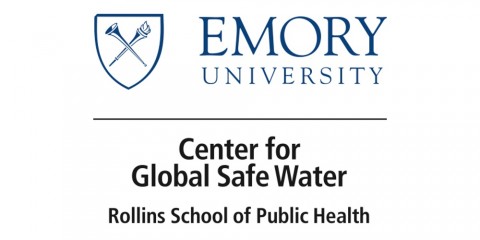Evidence summary regarding the importance of exposure to fecal pathogens of animal origin
2016 - 2017 • Emory University
Purpose
To review and synthesize existing scientific literature to assess the risk to human health posed by exposure to poorly managed animal feces
Activities
The following conclusions section from a paper published in Sept. 2017 (full link below) highlights some aspects of this project. Further publications are planned:
As envisioned by the Sustainable Development Goals, the world will achieve universal access to safe water, coverage of safely managed sanitation, and handwashing with soap by 2030. However, even if these ambitious targets are met, effectively eliminating direct and indirect exposure to human feces, risks associated with exposure to animal feces will remain. The literature in this review suggests that exposure to animals and animal feces has mixed effects on diarrhea and child growth, potentially increases risks of EED, STH infection, and trachoma, and has mixed effects on isolation of zoonotic pathogens in human stool.
There is some evidence for the WASH-related pathways by which humans are exposed to animals and animal feces, but more research on pathogen transmission parameters, animal husbandry practices, and cultural/social influences is warranted. Furthermore, few studies have tested interventions that control the transmission of pathogens in animal feces and limit human exposure to animal feces. As we increasingly understand the contribution of poorly managed animal feces to the overall global burden of disease, it is important to gain insights into the routes by which humans are exposed to animal feces to design efforts to interrupt these pathways and reduce subsequent human health impacts.
Countries of activity
Location of main activity
Objectives
To review and synthesize existing scientific literature to assess the risk to human health posed by exposure to poorly managed animal feces
Information taken from publication from Sept. 2017 (link to publication see below):
The primary objective of this systematic review was to examine what is known about human health impacts of exposure to poorly managed animal feces transmitted via WASH-related pathways in LMIC. We identified and synthesized existing literature to assess the extent to which exposure to poorly managed animal feces could affect health outcomes in humans. We modified the traditional “F-diagram” to focus on animal feces exposure in households and small-scale animal operations, in households with pets, and in communities with synanthropic rodents; through this lens we propose research priorities to better understand human exposure to poorly managed animal feces.
We identified interventions that have been used to control human exposure to animal feces and summarized what is known about their effectiveness in reducing the presence of animal feces in the environment, preventing human exposure to animal feces, and/or limiting negative human health outcomes.
Based on this review, we identified a set of priority research areas to improve our understanding of the human health burden associated with exposure to animal feces, with the ultimate goal of identifying potential control measures to reduce this burden in LMIC.
Further information
Information taken from publication from Sept. 2017 (link to publication see below):
Our review highlights the scarcity of information available on the human health impacts of exposure to poorly managed animal feces transmitted via WASH-related pathways. To accurately capture human exposure to animal feces, future research could prioritize longitudinal studies with in-home observation methodologies.
In addition, data to inform a rigorous assessment of the contribution of poorly managed animal feces to the global burden of disease is not available. Yet many associations between some measure of animal or animal feces exposure and health effects have been explored, and interventions designed to control human fecal waste will likely lead to suboptimal health gains in the absence of efforts to control animal feces in the same environment. Understanding the true burden of disease from poorly managed animal feces given the current infrastructure and behavioral contexts would provide important guidance for policy and programs.
It would be of considerable value to categorize and measure exposure to animal feces and to develop and evaluate interventions to mitigate that risk. Using direct observations and interviews/discussion with domestic animal owners, household members including women and children, veterinarians, and community leaders, more data are needed to
- understand the key behaviors and contexts associated with exposure to animal feces;
- identify key points (“hot spots”) of human contact with animals and/or their feces in different contexts (e.g., domestic, community);
- understand the factors associated with direct contamination of food from poorly managed animal feces, particularly in food markets and noncommercial agricultural/meat production facilities; and
- identify cultural behaviors that influence animal husbandry and animal feces management practices.
One particularly interesting line of inquiry would be to evaluate the trade-off between the nutritional benefits of livestock ownership with the health risks associated with exposure to animals. Many development projects promote animal husbandry as a way to improve nutrition and livelihoods, yet this review highlights the ways that contact between animal feces and humans may potentially be deleterious to health, especially in children. This trade-off was highlighted by several of the articles in this review.
Once more information is available on the magnitude of the health risk posed by animal feces exposure, knowledge around animal feces management, and key points of contact between humans and animals, culturally appropriate intervention strategies can be developed and rigorously evaluated.
Filter tags
Behaviour change Bill & Melinda Gates Foundation Global Health and hygiene University, education or research institution WASH and nutrition
Links

Uploaded by:
Elisabeth von Muench (Elisabeth)














